Louisiana Sea Grant Discovery, Integration and Application initiative (LA DIA)
Bill Dennison ·Tracey Saxby and I traveled to Baton Rouge for a two-day training session for the Louisiana Sea Grant Discovery Integration and Application (LA DIA) scholars. Robert Twilley, Louisiana Sea Grant Director, and his staff helped us develop this training session. Tim Carruthers, the former Program Director for the Integration and Application Network and now working in Baton Rouge with The Water Institute of the Gulf organized for several Water Institute staff to participate in portions of both days.
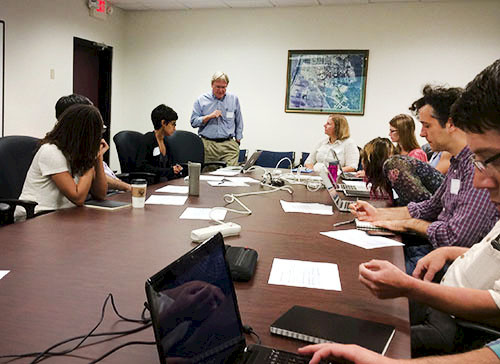
Amy Clipp expertly facilitated the training session. We kicked off the training session with a presentation by Tracey Saxby on visual science, rich in examples. We then played several rounds of conceptionary, followed by a summary of conceptual diagrams and a brief introduction to the IAN symbol libraries and software.
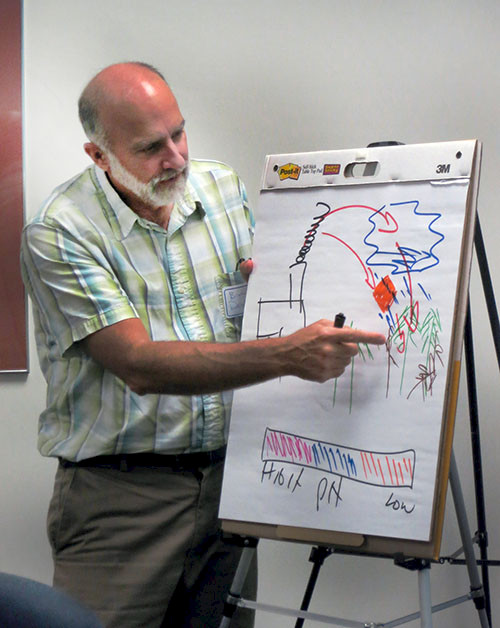
Following the conceptual diagram session, we had a discussion about the role of the LA DIA scholars in the milieu of adaptive management, engaging with stakeholders, researchers, and clients to produce synthetic communication products. The multiple roles necessary included having the LA DIA scholars serve as facilitators, integrators, and consensus-builders in order to produce quality communication products. There were several words that described their approach: prudent, objective and balanced. In addition, the LA DIA scholars will need to act as time keepers to keep the project on track and act as space referees when prioritizing the content of science communication products.
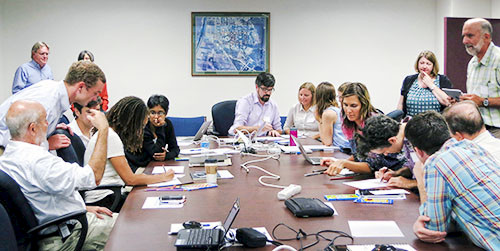
The LA DIA scholars provided one page summaries of their projects and we reviewed and commented on these drafts. The LA DIA scholars built on previous webinars to produce short descriptive titles (active titles), a summary narrative statement that used the ". . . AND . . . BUT . . .THEREFORE . . ." statements, ala Randy Olsen and a compelling visual element. The feedback recommended incorporating conceptual diagrams into the visual elements, creating short paragraphs with 'white space', using bullets or numbering where appropriate, and explicitly stating the project goal(s).
We had a very enjoyable and tasty dinner at a popular Louisiana State University off-campus establishment, The Chimes. This provided us an opportunity to get to know the Sea Grant staff and LA DIA scholars in relaxed surroundings.
On the second day, we started with a discussion about the 'Adaptive Challenge' where defining the problem requires learning and the solutions are not clear vs. the 'Technical Challenge' where there are clear problems and solutions. This struck me as another way of contrasting 1) simple, complicated and complex problems, 2) puzzles, problems and messes, or 3) tame, wicked or super-wicked problems.
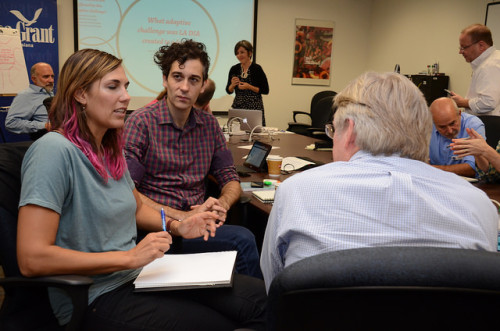
This led us into a discussion about the 'science deficient' model of science communication, where the underlying assumption is that people will make the right choices just as long as the science is explained to them sufficiently. It is thought that it is the lack of knowledge that hinders management. The fallacy of the science deficient model reminded me of people that raise their voices talking to someone who doesn't understand the language they are using, as if that will overcome the language barrier.
We discussed the traditional career model in academia where the narrowing of the field of expertise occurs throughout the pre-tenure career, followed by a broadening that comes with experience and training in the post-tenure career. The various reward systems in place insure this model prevails. The alternative career model where the experiences and training occur early in the career and the reward systems are altered could lead to broader disciplinary approaches throughout the academic career. The business model of academic research was also identified as a factor in developing the academic freedom that tenure was originally designed to insure.
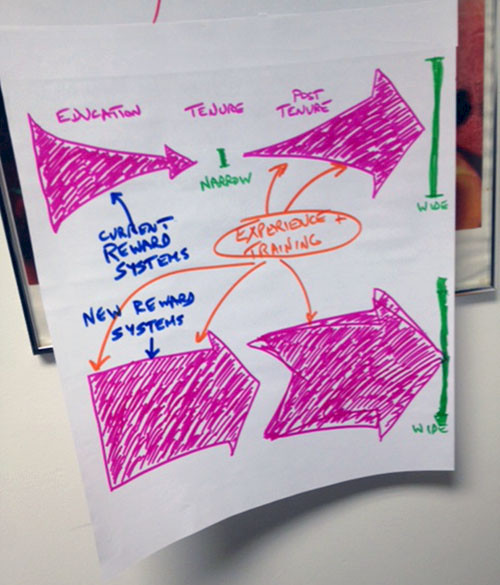
Over lunch, the Sea Grant Marine Extension Program agents provided vignettes of their experiences in science communication in a session entitled 'Lessons from the field'. Rusty Gaude told a story about his efforts in the catfish aquaculture industry. A mysterious 'black hole' disease was killing the fingerling catfish that were introduced into the ponds. The fingerlings simply disappeared, thus they entered a 'black hole'. Rusty and his colleagues worked hard to ascertain the cause of the missing catfish and made significant progress. A subsequent research group came along and took credit for solving the problem, without acknowledging the prior research by Rusty’s group. The quote that summarized this vignette was that of Harry Truman who said, "It is amazing what you can accomplish if you do not care who gets the credit."
Alan Matherne told us about his first deployment to coastal Louisiana between 1981-1984. He talked about the importance of being present at meetings, about being a recognizable person in the community, and about spending 'quality time' with key stakeholders which resulted in some indelible images. The quote that summarized his story was that of Woody Allen who said, "Eighty percent of success is showing up." Carol Franze related a story about an encounter with stakeholders who accused her of trying to take jobs away from them when she recommended to a group that they utilize landscapers to create eco-friendly solutions. She found out later that the concerned stakeholders were landscapers and they incorrectly assumed that Carol had a self-interest in generating business for herself. The quote that summarized her story was that of Jay Turoff who said, "When a man owns the tin, he has a vested interest in it." I provided a story of developing the suite of communication products to support the Healthy Waterways Campaign in Southeast Queensland. I contrasted the weighty black and white scientific conference proceedings book entitled 'Moreton Bay and Catchment' with the short, colorful book entitled 'A crew-member's guide to the health of our waterways'. The 'Crew guide' was produced by a small group of people, was widely disseminated and helped launch a comprehensive research, monitoring and management program. The quote that summarized this story is that of Margaret Mead who said, "Never doubt that a small group of thoughtful, committed citizens can change the world; indeed, it's the only thing that ever has."
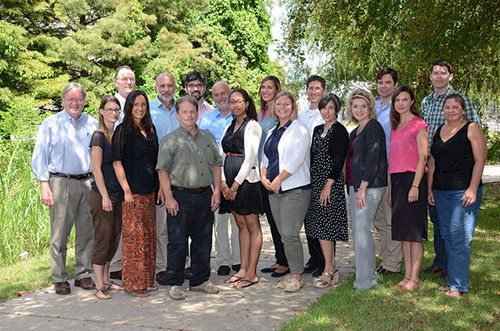
Tracey Saxby provided a PowerPoint tutorial, weaving in stories about her use of PowerPoint presentations as part of her efforts to reduce plastic bag use in grocery stores and stop the siting of a liquid natural gas facility in British Columbia, Canada. Several points emerged from the discussion associated with her tutorial. One point was the tradeoff of using PowerPoint vs. an oral presentations without PowerPoint, illustrated when I read Lincoln's Gettysburg Address while displaying an inane PowerPoint presentation. Another discussion was about the tradeoffs of using a lectern vs. moving around the stage.
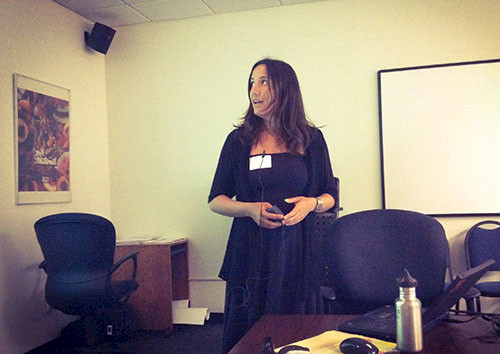
The final session was a listening exercise where the LA DIA scholars took turns listening to a series of statements by role playing actors who were representing fictitious characters expressing their concerns and issues to each LA DIA scholar. This proved to be an interesting and very enjoyable exercise. For example, Rex Caffey, the Director of Marine Extension for Louisiana Sea Grant, acted the part of a bait shop owner from Houma (Sammy Hurley). Rex's Cajun accent and funny asides had us doubled over in laughter. As the bait shop owner, he was expressing his concerns about sediment diversions to the LA DIA scholar Leanna Heffner. I played the part of a Grand Isle bank manager (Fred Cheezum) who was concerned that the sea level rise inundation maps disseminated by Patrick Michaels would curtail the ability of the island residents to make a transition to a tourism-based economy. Amy Clipp played the part of a Vietnamese fisher (Sally Dang) who was concerned that Jacob Mitchell's depictions of Mississippi River sediment diversions would affect the livelihoods of her family and community. Matt Bethel played the part of a state agency bureaucrat (Roy Summerhayes) who was sensitive to criticisms about the government's plans to manage the coastal restoration efforts and addressed his comments to Emily. Carol Franze played the part of an elected official in state government (Ms. Ellen Marcelle), who was frustrated by the lack of resources and specific recommendations about what to do to protect her constituents from impacts of climate change. She directed her comments to Katrina Duback.
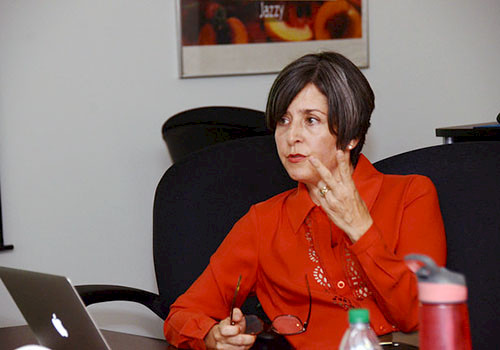
The listening exercise consisted of the LA DIA scholars repeating what they heard from the different stakeholders and then the entire group critiqued the summary. This was followed by a brainstorming of what the response to stakeholders by the LA DIA scholars could include. The LA DIA scholar then formulated a response and this response was critiqued by the entire group. The respectful and thoughtful responses by the LA DIA scholars were impressive. One of the overriding themes that emerged was the need for the LA DIA scholars to listen for the underlying emotional content of the stakeholder statements. The importance of connecting with the stakeholders, acknowledging their concerns, providing honest and considered responses was stressed.
A wonderful bonus of this visit was an opportunity to catch up with Tim Carruthers and Courtney Schupp and their growing family. It reminded me of the initial visits that Tim and I made to Baton Rouge in 2005 to work with Robert Twilley and his team regarding post-Katrina activities, which resulted in a newsletter series.
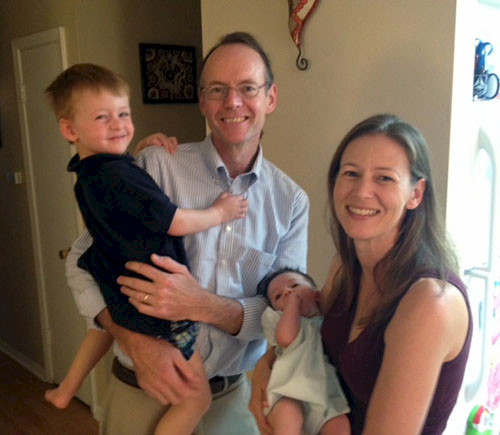
About the author
Bill Dennison

Dr. Bill Dennison is a Professor of Marine Science and Interim President at the University of Maryland Center for Environmental Science (UMCES).